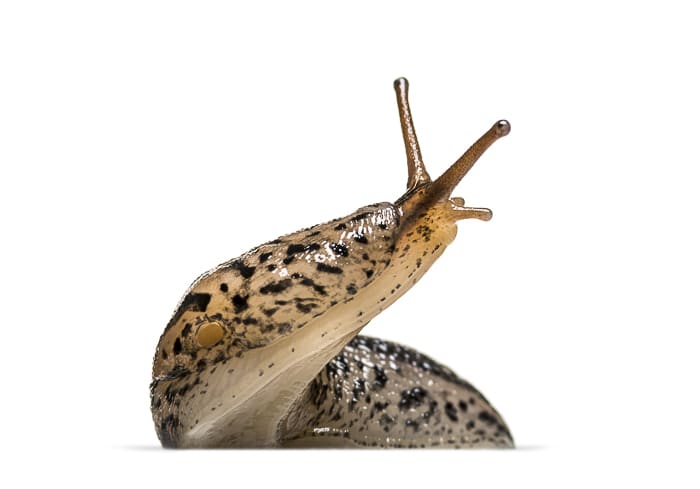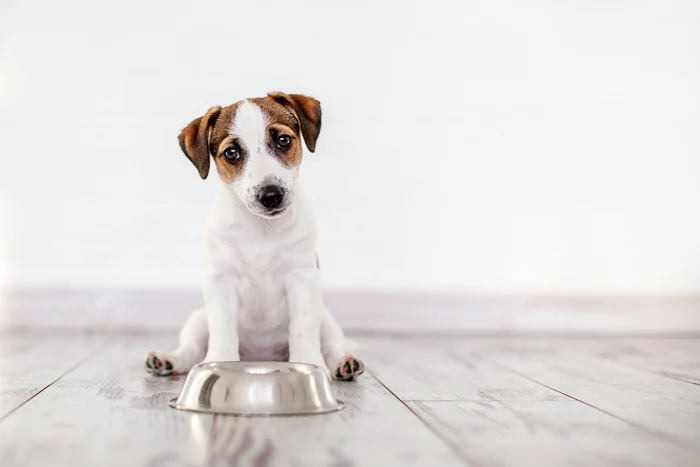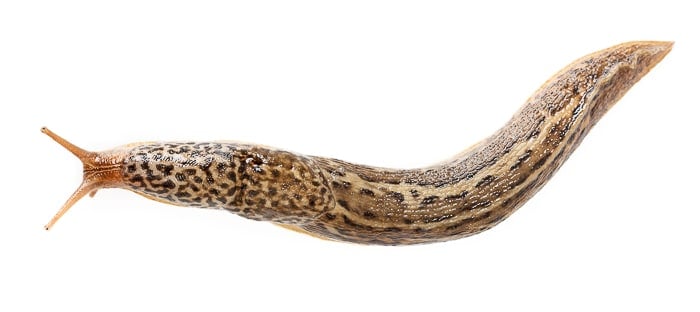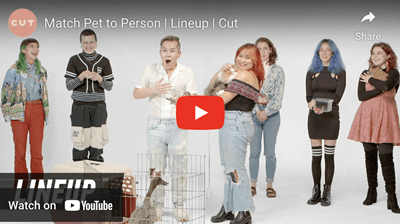Your dog likely enjoys being outside in the fresh air. Running and playing, chasing sticks, digging and taste-testing new finds, and drinking out of puddles. Sometimes dogs accidentally lick or eat a slimy little friend – slugs! Should you be concerned if this happens to your dog? Are slugs poisonous to dogs?
Let's dive deep and find out if slugs are poisonous to dogs before they even start popping up outside this season.
Dr. Jess explains more about this slimy slug question below:

What is a Slug?
The University of Minnesota, where I went to veterinary school, describes slugs as:
- “Slugs are slimy, soft-bodied animals, described as shell-less snails.
- They are present from spring to fall, in cool, moist areas with shade.
- Slug population increases during rainy season and on well-irrigated gardens.
- Slugs feed on leaves of many plants (especially seedlings), ripening fruits and vegetables, and decaying plant matter.
- They feed at night and hide during the day.
- Slugs create irregular holes on leaves and fruit and affect the appearance of the plant.
- Extensive feeding can result in a weak or dying plant.
- Baits and pesticides can be used to control slugs, along with other methods like setting traps and barriers.” [source]
Slugs are legless and armless slimy little creatures that range in color from brown to grey.
They can grow to be up to a few inches in length, and slowly move along with a pair of feelers that looks somewhat like antennas.

What Do Dogs Typically Eat?
Some dogs are not picky at all about what they eat. They’ll eat whatever you offer them- they're like vacuum cleaners sucking up anything you put in front of them and then some!
Some dogs are on the pickier side of things. Pickier pups can be harder to properly feed because they just won't eat any food we give them. Try feeding a picky dog something like okra!
A common canine diet for pet dogs consists of a complete dry or wet feed and possibly some form of supplements in some specific cases (however, not all pet dogs need supplements).
Foraging can also be included in the diet if the dog is allowed to roam, or the dog is feral, and of course there are treats that are a part of many dog's diets!
The diet of every dog breed will very when you are looking into a healthy and complete diet for your pup. So it is important to know when offering food to your dog, what constitutes a healthy choice, and what does not.
An improper diet could put your dog at risk of having problems properly digesting their food and absorbing nutrients correctly. And we don’t want that now do we???
So let’s talk specifically about slugs, since that's why you clicked over here today, and talk about how it could affect your dog’s overall health and well-being.
Why Do Dogs Eat Insects/Bugs?
Reason #1: Dogs are by nature very curious. Sometimes their curiosity gets the best of them.
So if you have a new, odd-looking and unfamiliar insect comes crawling into their world, they are likely going to investigate it.
With some dogs, they simply cannot stand not being able to test out new things in their life, espcially taste-testing.
So your dog may be taste-testing bugs and other creepy crawlers to try and figure out what this new bug is.
Many times, they will taste them, decide that it doesn't taste amazing, and leave the rest of it alone.
Some dogs will continue to taste-test, and the insect will need to be removed so that your dog can no longer get to it and play or eat more of it.
Reason #2: Another part of a dog's natural being, is their affinity to scavenge.
Many dogs like to hunt things down, scavenge, seek, and search.
Whether it is their favorite toy, the best stick in the forest, or they're hungry for their food bowl to be filled at dinnertime and need a snack in the meantime, some dogs have a natural tenacity to find things to play with, to snack on, or to “collect” for later.
This may just happen to be an insect at the moment.

What Makes Some Insects Toxic to Dogs?
This is a hard question to answer because each insect is different.
Some insects contain toxic substances that can make your dog sick in different ways depending on where the chemical takes effect.
Sometimes the liver is affected, other times it is the kidneys, and others affect the circulatory system or a multitude of other body systems are affected.
If you are worried or concerned over a specific bug's toxicity, contact your local vet immediately.
Are Slugs Poisonous to Dogs?
No, your common slug is not poisonous to dogs. Your typical slug does not contain any toxic ingredients.
But just because a slug is not poisonous to your dog, does not mean that eating a slug won't give them any trouble, because it can.
See more on this below…
Can Slugs Be Harmful to Dogs?
Now that we've learned that slugs are non-toxic for dogs to ingest, we need to understand some of the risks involved if they do happen to grab a taste.
You should keep the following factors in mind:
Harmful Reason #1: Lungworms
Slugs can be the intermediate host for a pest commonly known as the lungworm.
The common species of lungworm in dogs, include Crenostoma vulpis, Oslerus osleri, and Eucoleus aerophilus, parasitic worms that can cause a lot of harm to your dog.
Not only is the slug an intermediate host to this parasite, but the worm's larvae can also be found in slug slime.
That's right, the slime trails that a slug leaves behind, can also be a big danger to your pup!
So what exactly does this lungworm thing actually do?
What is a Lungworm?
A lungworm is a worm that infects different animals in different locations.
For example, in the dog, Eucoleus live in the nasal cavity, or the nose of the dog.
Adult Oslerus osleri and Crenostoma vulpis live in the respiratory tubing leading to the lungs, specifically the trachea and bronchi.
Other varieties of the lungworm live in the lungs of some animals, such as Filaroides hirthi. [source]
Lungworms in Dogs:
Dogs become infected with lungworm by ingesting the parasite while it is its infective stage, which is different for the different types of lungworm.
Some lungworms are transferred to dogs by eating infected feces, and others by infected saliva transfer.
For instance, the larva of Crenostoma vulpis needs a snail or slug to act as an intermediate host for them to fulfill their life cycle.
The dog eats the slug contaminated with infective lungworm larva.
The larva then mature and lay new eggs in the respiratory tract tubing (the bronchi) leading to the lungs where they irritate the bronchi so much that makes the dog cough, coughing up the new larva.
The new coughed up larva is then reswallowed down the digestive system tract of the dog, and excreted out in the dog's feces.
Then your garden slug comes by and picks up the lungworm larva from the dog feces in the environment and the process starts over again.
Other types of lungworms infect dogs in different cycles – the specific infective cycle depends on the species of lungworm.
For instance, Oslerus osleri commonly occurs when the mother dog licks and grooms her pups, transmitting the parasite through the saliva.
Dogs can become infected with lungworms by eating slugs or snails, by drink contaminated water or environment or eating another animal, like a frog, mouse or bird, that has eaten a slug.
Lungworms in Dogs: Signs and Symptoms
Signs of lungworm infection range from subclinical infections, where the dog shows no outward signs of lungworm infection, to death in extreme cases.
However, most lungworm cases are somewhere in between these two ends of the spectrum.
The severity of infection depend on the parasite load (number of worms present), the species and location of the parasite in the dog's body, and the immune status of the dog.
Commonly, if the dog already has a lowered immune system (ex. young pup, already sick, has cancer, etc.), they are more likely to have a more severe lungworm infection than an otherwise healthy dog.
Many canine cases of lungworm has signs ranging from coughing, to higher and/or faster respiratory rates (breathing rates), to respiratory distress or dyspnea (struggling to breathe).
Increased sneezing, increased lethargy, and decreased exercise tolerance, can also be seen in some lungworm infections.

Lungworms in Dogs: Diagnosis
- Clinical signs: Your veterinarian will ask you questions about your dog's history and what signs you have observed. Then, your vet will likely do a physical exam of your pet to try and observe any other finding that may help them diagnose what the underlying cause of your dog's symptoms are. Your vet will likely recommend more diagnostic testing to help them decide what is the root cause of your dog's issues. Remember: lungworm symptoms such as cough and exercise intolerance are very non-specific, meaning that the underlying cause could be many many different conditions and not just a lungworm infestation. Usually more testing is necessary to diagnose lungworms. Some of the other test include:
- Bronchoscopy (endoscope): Examining the airways with a small endoscope placed down into the airways can help your veterinarian to view what is going on. Endoscopy in sme animals can reveal infection (white blood cells), larva, or lungworm eggs if a washing is conducted. In this procedure, fluid is introduced in the respiratory tract and then removed to see if any of the aforementioned items can be collected and used as evidence in cases with respiratory issues to help guide testing and treatment options.
- Radiographs (x-rays): A set of radiographs examining the respiratory tract can help your veterinarian see what could be going on in your dog's respiratory tract. It's almost like x-ray vision in some cases! Sometimes vets can see infections in the lungs (“pneumonia”), as well as nodules and abnormal spots, signifying something is wrong with your pup's respiratory tract.
- Fecal examination: Your veterinarian may take a fecal sample from your dog and run tests to see if there is evidence of lungworms, by observing eggs or larva, depending on the species of lungworm amd their corresponding life cycle stage in dog feces. Do not be shocked if your dog's fecal exam comes back normal and your vet wants to do more testing to rule out lungworms – sometimes dogs will be infected with lungworms and their fecal exam is “normal”, meaning that no eggs or larva were spotted on the fecal exam itself.
Lungworm in Dogs: Treatment
Treatment should be focused on eliminating the parasites themselves and controlling any symptoms caused by the body's immune reaction to the parasite.
Lungworms have been shown to be killed with a few weeks to a few months of species-specific antiparasitic medications (ex. Ivermectin, Fenbendazole, etc.), depending on the species of lungworm, severity of infestation, and severity of symptoms.
If symptoms are observed, your veterinarian may treat the symptoms too, on top of the antiparasitic medication.
If the dog has severe respiratory issues, they may need to be hospitalized for oxygen therapy and more medical support to help them get to a more stable condition.

Harmful Reason #2: Pesticides
Many garden plants have pesticide products applied or sprayed on them to keep the plants free from pests/bugs.
Some plants also have chemical sprays applied on them to decrease fungal growth, all of which can be applied to and carried by the slug if it is in the vicinity.
You don't want your dog in contact with these potentially harmful chemicals.
Harmful Reason #3: Allergic Reaction to Slugs
Anything, artificial or not, can be cause for an allergic reaction or upset stomach. Anything that your dog puts in their mouth and consumes is fair game for an allergic reaction.
A dog can develop an intolerance or an allergy to anything that they ingest, so there is always the possibility that your dog is allergic to slugs or something in or on a slug.
If you suspect your dog is allergic to slugs, do NOT allow your dog to eat them and contact your local veterinarian immediately.
If your dog is allergic to any part of slugs and accidentally ingests one, go to your nearest animal emergency room immediately.
The dog’s body may treat the ingested slug as a severe allergen and attack it, using the dog’s own immune system.
When this happens, the attack sets off a hypersensitivity reaction and can result in any of the following symptoms:
Common symptoms of adverse/allergic reaction to foods:
- Nausea/vomiting
- Diarrhea
- Itching/Increased grooming
- Fever
- Lethargy
- etc.

What If my Dog Eats a Slug?
If your dog eats a slug, monitor them closely for adverse effects and signs and symptoms mentioned above, from adverse allergic reactions, to coughing and lethargy due to lungworms.
If you are very concerned about the slug ingestion, contact your local veterinarian immediately.
What if My Dog Ingests Slug Slime Trail?
The same goes for eating a slug's slime trail!
Monitor your dog closely like you would if they consumed the actual slug itself.
Monitor your dog for coughing, respiratory troubles, etc. and contact your vet if you have any concerns or notice any changes in your pet
Summary:
Slugs are non-toxic to dogs, meaning that the creature itself does not contain any materials that are deemed toxic to dogs.
But just because this slimy creepy crawler is non-toxic, does not mean that if your dog consumes a slug, that they will not show any negative physical signs.
There is a list of signs and symptoms that may help indicate that the slug that your dog ate is not sitting well with them.
And as always, if your dog shows any adverse signs after ingesting a slug or slug slime, contact your veterinarian immediately.

The information provided in this article is not a substitute for professional veterinary help. For medical advice, contact your veterinarian.
![[Vet Explains Pets]](https://vetexplainspets.com/wp-content/uploads/2024/09/cropped-vetlogo-199x66.png)

